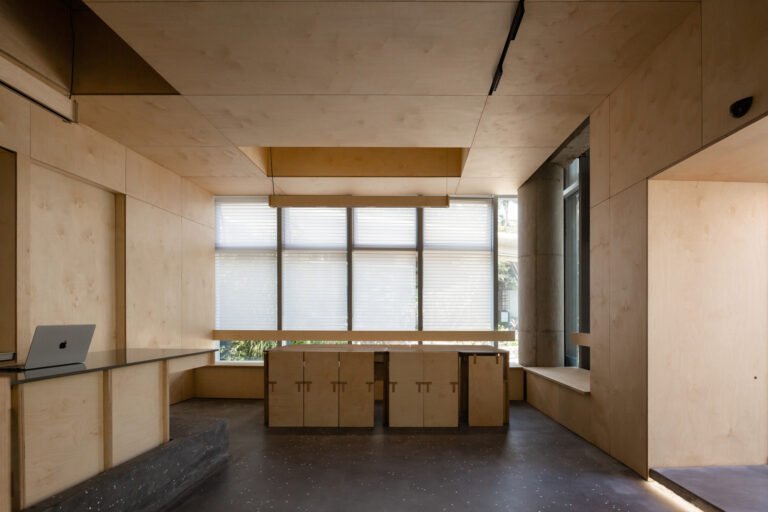Morgan Library facade and garden are restored for the first time in 115 years
Visitors to New York City’s Morgan Library & Museum can enter through the building’s historic main facade for the first time in the institution’s 115-year history following an extensive exterior restoration project, that also involved a redesign of the site’s landscaping. Over the last decade the private library and museum has undergone a series of renovations and restorations, which have restored, altered, and expanded the original 1906 design by McKim, Mead & White. This latest update, a $13 million endeavor, is the first to focus on restoring the library’s exterior. Integrated Conservation Resources (ICR) worked with British landscape designer Todd Longstaffe-Gowan to reinstate the building’s outward appearance to its former glory, while also taking liberty to envision the unrealized garden spaces.
“The building was completed in 1906 and is considered one of McKim, Mead & White’s finest works, perfectly embodying the Renaissance ideal of the unity of the arts through the integration of architecture, sculpture, and painting with exceptional craftsmanship and materials. The structure reflects its contents: majestic in design, yet intimate in scale,” stated a press release from the Morgan Library and Museum.

The Morgan Library was commissioned in 1902 by banker and bibliophile John Pierpont Morgan to house his private collection of books, manuscripts, and other antiquities. The building, constructed with pink Tennessee limestone, was situated adjacent to the financier’s residence on Madison Avenue and 36th Street. In his will Morgan asked that his library become a public institution following his death. Under the direction of his son Jack, the library opened to the public in 1924.
The largest, and most extensive, of the renovation works on the Morgan Library completed in 2006; architect Renzo Piano added 75,000 square feet to the facility, with the addition of a four-story glass and steel structure designed to connect the main library building to other buildings on the site, the Annex and Jack Morgan’s former residence. Interior spaces–the collection rooms, studies, and lounges–of the the library were restored in 2010.
Director of the Morgan Library & Museum, Colin B. Bailey, said in a statement, “The 1906 Library building is the heart of the modern Morgan and a link to its patron, as well as to the architects, builders, and artisans who created the historic structure. The recent restoration and the new Garden have enabled us to reexamine the original commission and conception in a variety of ways and to expand our offerings to the public.”

Restoration on the 36th street entrance, began in 2016 when ICR was hired to begin conservation work on the Neoclassical building with an assessment of the materials and conditions. A number of issues were identified during this initial phase, including deteriorating masonry and sidewalks; corroded metalwork; poor roof conditions; birds; and water infiltration. The nitty-gritty restoration work commenced in 2019. A team of masonry specialists and laborers cleaned and repaired the facade fixing cracks and removing layers of pollution, accumulated on the stone’s surface. The facade is brimming with architectural details and artful features, many of which were in dire need of restoration.
The existing metalwork, including the fence abutting the property and the large lantern dispelled from the loggia, was cleaned and repaired to working order, sculptural reliefs adorning the porch and frieze were carefully conserved, and the mammoth mahogany and bronze doors were brought back to life. One of the most defining features of the original design are the two Tennessee marble lioness sculptures respectively resting atop plinths, greeting each and every passerby. Morgan commissioned Edward Clark Potter to design the sculptures; for inspiration Potter spent time sketching lions at the Bronx Zoo. John Grignola, an Italian immigrant, was bestowed the honor of carving the pair.

At night new lighting, by Tillett Lighting Design Associates, fixed to the porch and inset in the stonework of the garden complements the updated facade. Its luminosity is intentionally dimmed alluding to the Library’s past use as a private space.
Before his death in 1913 Morgan was in correspondence with gardener Beatrix Farrand, a friend of architect Charles Follen McKim, on sprucing up the landscape surrounding the library, which was never fully realized. This latest redeisgn by Longstaffe-Gowan–who has redesigned a number historical properties, including Hampton Court Palace and Kensington Gardens–has essentially become the property’s first comprehensive curated gardenscape.

The garden design received push back from New York’s Landmark’s Preservation Commission (LPC); the LPC argued since there was never a garden on the site it should be left that way to conserve the site’s integrity. Documentation and letter correspondence from the museum’s archive collection was used as evidence to prove there was intention for landscaping and subsequently the LPC granted permission for the design. The plantings are seasonal, designed for peak viewing in the summer months.
The realized design is understated with low-lying plants and shrubbery that place focus on the building and its history. Bluestone pavers form pathways which extend across the property. The patterning of stonework takes cues from the Library’s floor. Intricate pebble work forms the area for garden beds, planted with herbaceous plants and periwinkles. At the center of the beds are a number of antique pieces, from Morgan’s collection, these include a Roman sarcophagus, Roman funerary stele, and set of Renaissance corbels. The The Morgan Library and Museum’s collection and resources were insurmountable to the entire project.

“It was a pleasure to have at our fingertips, the remarkable resources and collections of the local library. And we mined that extensively through the manuscripts, as well as all the motifs in the building, which was so remarkably rich in sculptural additions, and those were used to inform the design,” said Longstaffe-Gowan at the garden’s unveiling.
To coincide with the unveiling of the garden and the restored facade, the Library is hosting an exhibition that explores the history of the building. J. Pierpont Morgan’s Library: Building the Bookman’s Paradise is on view from June 10 to September 18, 2022. On view are rarely seen architectural drawings, photographs, letters and books chronicling the building’s entire life. A video series documenting the recent restoration is available to patrons online and a new app developed with Bloomberg Philanthropies can be used both on- and off-site to learn about Morgan, the library, and the collection. This exhibition also acknowledges the Lenape, the Indigenous group which inhabited the site, as part of the museum’s commitment to its Diversity, Equity, Accessibility and Inclusion plan.
On Saturday, June 18 and Sunday, June 19 the Morgan Library and Museum will offer free admission, garden tours, family programming, and live music as part of its Garden Family Fair and Free Community Weekend. The Garden will remain open seasonally through Sunday, October 9.



